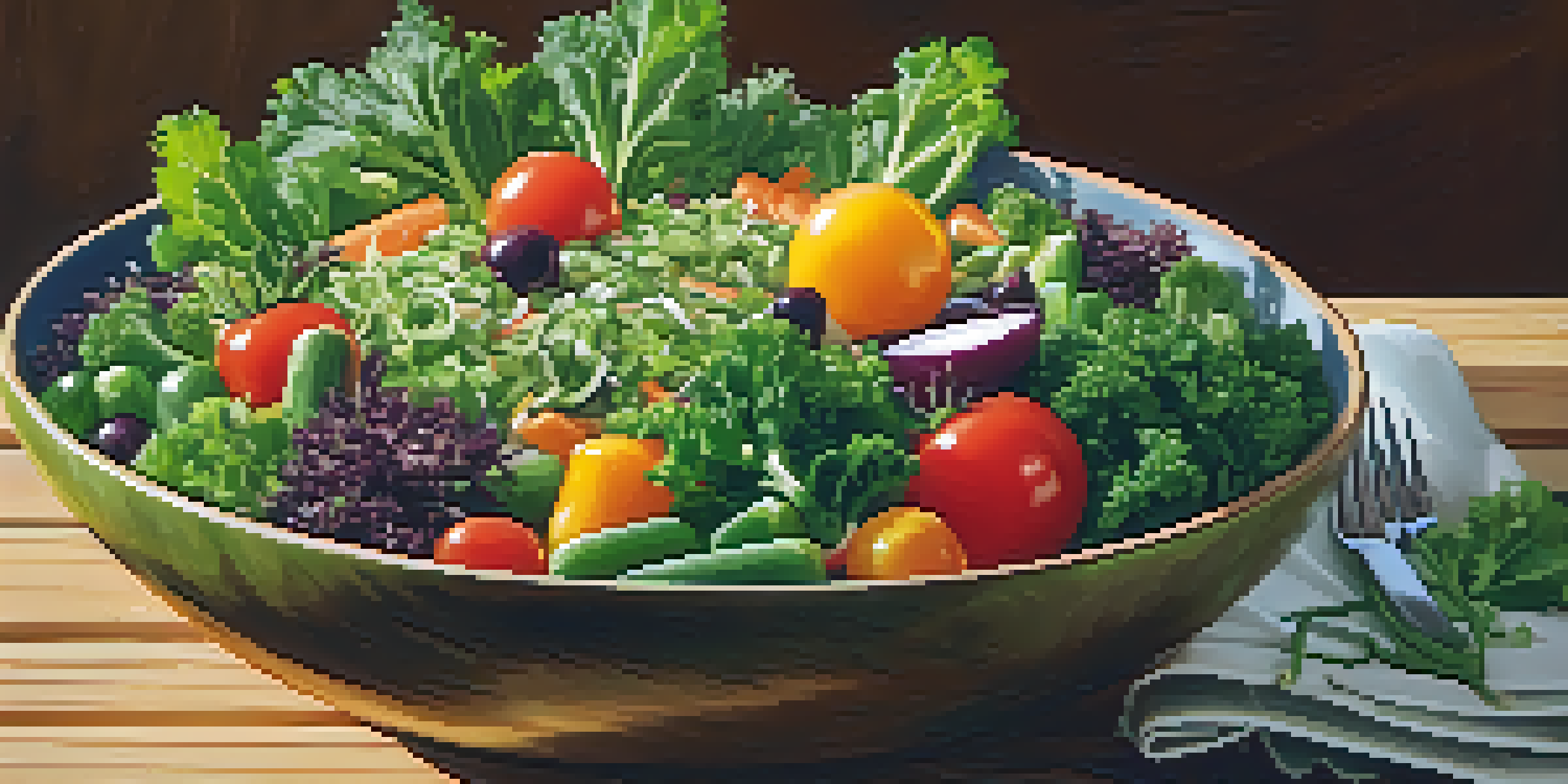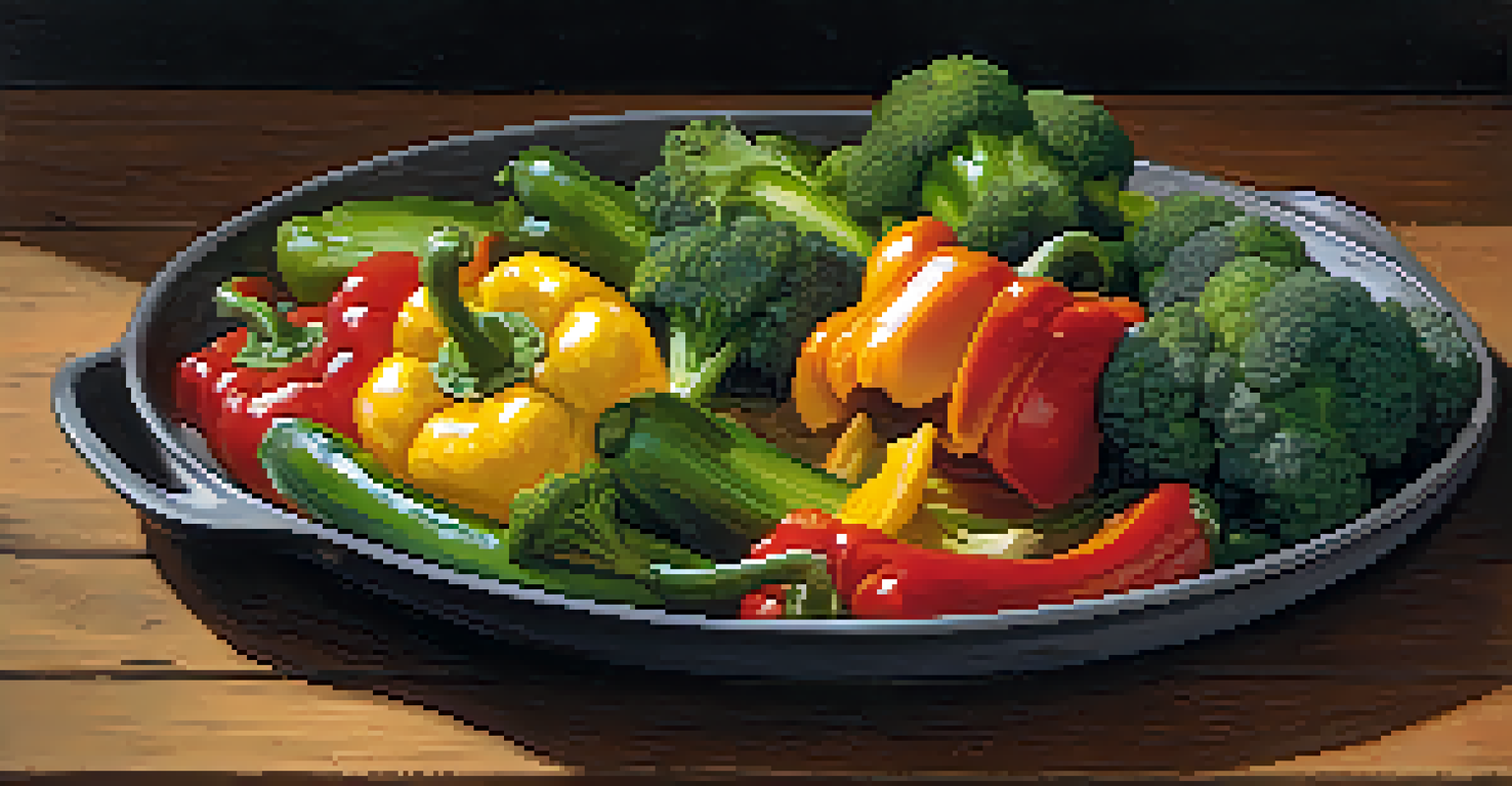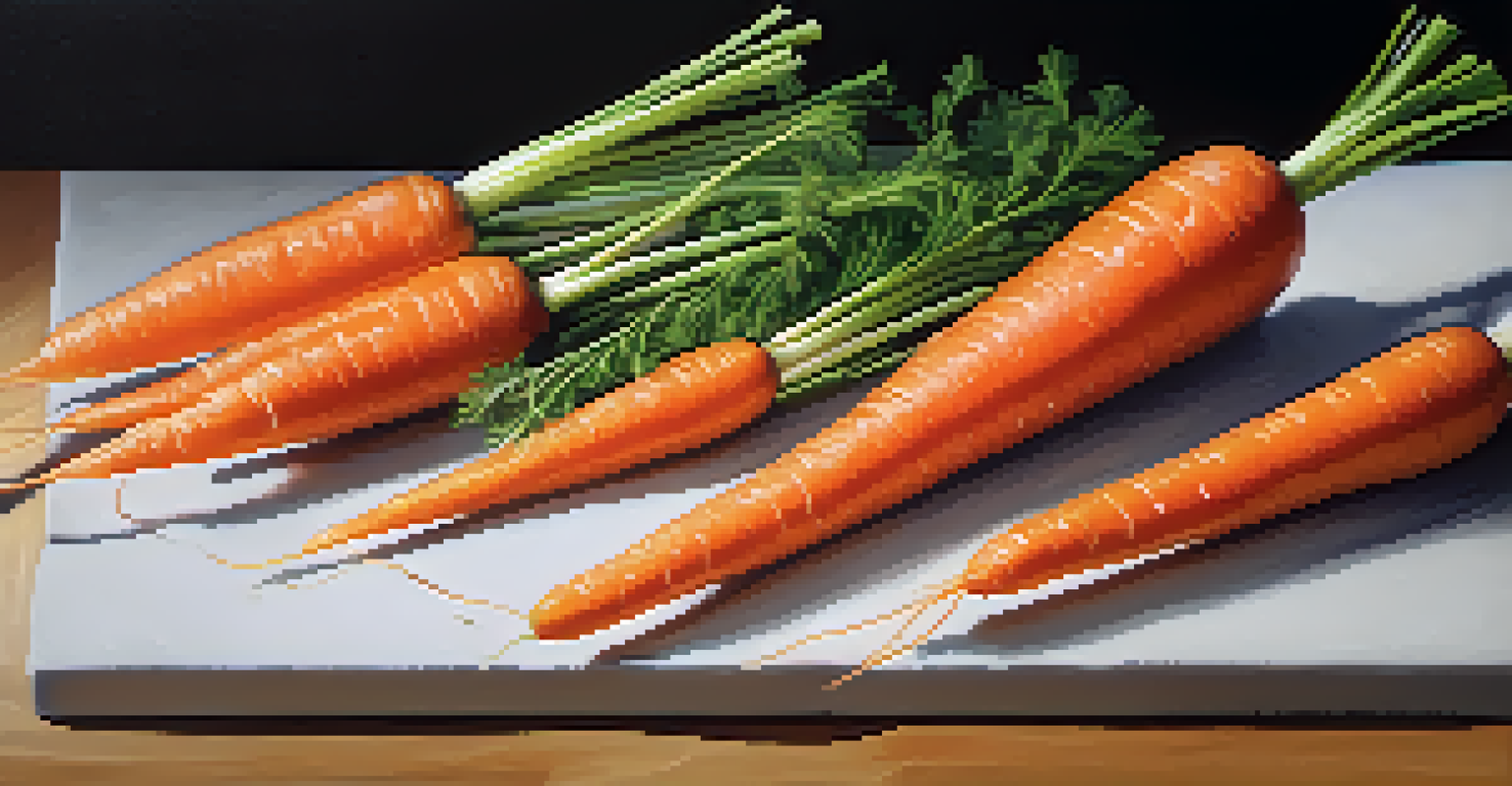Comparing Nutrient Density: Raw vs. Cooked Foods Explained

Understanding Nutrient Density: What Is It?
Nutrient density refers to the amount of essential nutrients a food contains relative to its calorie count. Foods that are high in nutrient density provide more vitamins, minerals, and other beneficial compounds without adding excessive calories. For instance, leafy greens are often considered nutrient-dense because they are low in calories yet packed with vitamins A, C, and K.
Let food be thy medicine and medicine be thy food.
In contrast, foods that are low in nutrient density might provide more calories without corresponding nutritional benefits, such as sugary snacks. The concept of nutrient density helps guide healthier eating choices by encouraging the consumption of foods that promote overall well-being. By focusing on nutrient-dense options, you can nourish your body more effectively.
Understanding nutrient density is crucial when comparing raw and cooked foods, as cooking can affect the availability of nutrients. Some people may be surprised to learn that cooking can sometimes enhance the nutrient density of certain foods, while in other cases, it can diminish it.
Raw Foods: Benefits and Nutritional Value
Raw foods are those that have not been cooked or processed, retaining their natural state and nutrients. One of the primary benefits of consuming raw foods is that they often contain higher levels of heat-sensitive vitamins, such as vitamin C and certain B vitamins. For example, raw broccoli is an excellent source of these vitamins and provides fiber that aids in digestion.

Additionally, raw foods can be rich in enzymes, which some believe help with digestion and overall health. Eating a diet rich in raw fruits and vegetables can also contribute to hydration and provide a variety of antioxidants that combat oxidative stress. However, it's essential to wash your raw produce thoroughly to avoid any harmful bacteria.
Nutrient Density Explained Simply
Nutrient density measures the amount of essential nutrients in food relative to its calories, guiding healthier eating choices.
On the flip side, raw foods can sometimes be harder to digest for some individuals, leading to discomfort. Some essential nutrients may also be less bioavailable in raw form, meaning your body may not absorb them as efficiently. Thus, while raw foods have their advantages, they might not be the perfect choice for everyone.
Cooking Methods: How They Affect Nutrient Density
Cooking methods vary widely, and each can have different effects on nutrient density. For instance, steaming vegetables is often considered one of the best cooking methods for preserving nutrients, while boiling them can lead to significant nutrient loss. This happens because water-soluble vitamins, like vitamin C, leach into the cooking water, which is often discarded.
The food you eat can be either the safest and most powerful form of medicine or the slowest form of poison.
Other cooking methods, such as roasting or sautéing, can enhance the flavor and texture of foods, making them more enjoyable to eat. Interestingly, cooking can also break down cell walls in certain vegetables, increasing the bioavailability of nutrients like lycopene in tomatoes and beta-carotene in carrots. This means that in some cases, cooked foods may provide more accessible nutrients than their raw counterparts.
However, it's important to choose cooking methods wisely to maximize nutrient retention. For example, microwaving vegetables with a little water can help preserve their nutrients while still cooking them quickly. Understanding how different cooking techniques impact nutrient density enables you to make informed choices about your meals.
Comparing Nutrient Density: Raw vs. Cooked Foods
The comparison between raw and cooked foods hinges on how cooking affects nutrient availability. While raw foods typically retain more heat-sensitive vitamins, cooking can enhance the absorption of certain nutrients. For example, cooked spinach provides more accessible iron than raw spinach, making it a better choice for those looking to boost their iron intake.
It's also important to consider the overall dietary balance. A mix of raw and cooked foods can offer the best of both worlds, allowing you to maximize nutrient intake and enjoyment. Including both types in your diet can help ensure that you’re not missing out on essential nutrients that might be more readily available in one form or the other.
Raw vs. Cooked Foods: A Balance
Both raw and cooked foods offer unique nutritional benefits, and incorporating a mix can enhance overall health.
Ultimately, the best approach may be to listen to your body and observe how you feel after consuming various preparations. Experimenting with different combinations of raw and cooked foods can lead to a more satisfying and nutritious diet.
Specific Nutrients: When Cooking Helps or Hinders
Certain nutrients respond differently to cooking processes, and understanding these differences can guide your food choices. For instance, cooking can significantly enhance the availability of antioxidants in some foods, such as carrots and sweet potatoes. This means that while raw carrots are nutritious, cooked ones may offer even greater health benefits due to increased beta-carotene absorption.
Conversely, some nutrients, particularly water-soluble vitamins like vitamin C and several B vitamins, are more sensitive to heat. Cooking methods that involve high temperatures and prolonged exposure, such as frying, can lead to substantial nutrient losses. This highlights the importance of choosing gentle cooking methods to preserve these vital nutrients.
Knowing which cooking methods to use for specific foods can help you design meals that are both tasty and nutrient-rich. For example, lightly steaming broccoli rather than boiling it ensures you retain more of its nutritional value while still making it palatable.
Practical Tips for Balancing Raw and Cooked Foods
Incorporating a balance of raw and cooked foods into your diet doesn’t have to be complicated. Start by adding a variety of raw vegetables to your salads, while also ensuring you cook some of your favorites, like zucchini or bell peppers, to enhance their flavor and nutrient profile. This combination can make meals more diverse and enjoyable.
Consider meal prepping to save time during the week. You can chop raw vegetables and store them in the fridge for quick snacking, while also preparing larger batches of cooked foods to have on hand for easy meals. This strategy not only simplifies your cooking routine but also increases your chances of eating a balanced diet.
Cooking Methods Matter for Nutrients
Different cooking methods affect nutrient retention, so choosing the right technique is essential for maximizing health benefits.
Lastly, don’t forget to experiment with different recipes and cooking techniques. Trying new dishes can keep your meals exciting and introduce you to the many health benefits of both raw and cooked foods. Embrace the journey of discovering what works best for you and your taste preferences.
Final Thoughts: Making Informed Food Choices
As we've seen, both raw and cooked foods have unique benefits and nutrient profiles that can contribute to a healthy diet. By understanding how cooking impacts nutrient density, you can make informed choices that align with your health goals. There’s no one-size-fits-all answer; it’s about finding what works best for your body and lifestyle.
Listening to your body is crucial, as some individuals may thrive on a raw food diet, while others might feel better with a mix of cooked foods. It's also worth considering personal preferences, as enjoying your meals can significantly impact your overall eating habits. Remember, food is not just about nutrition; it’s also about pleasure and satisfaction.

In the end, the key is variety. Embracing both raw and cooked foods can lead to a more balanced and enjoyable diet. So, whether you prefer a crisp salad or a warm vegetable stir-fry, rest assured that both can play a valuable role in your health journey.